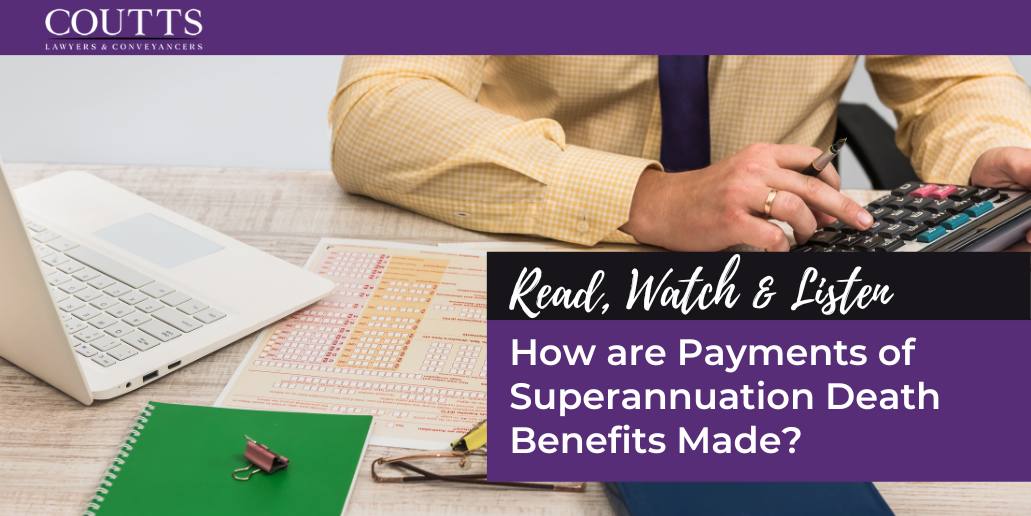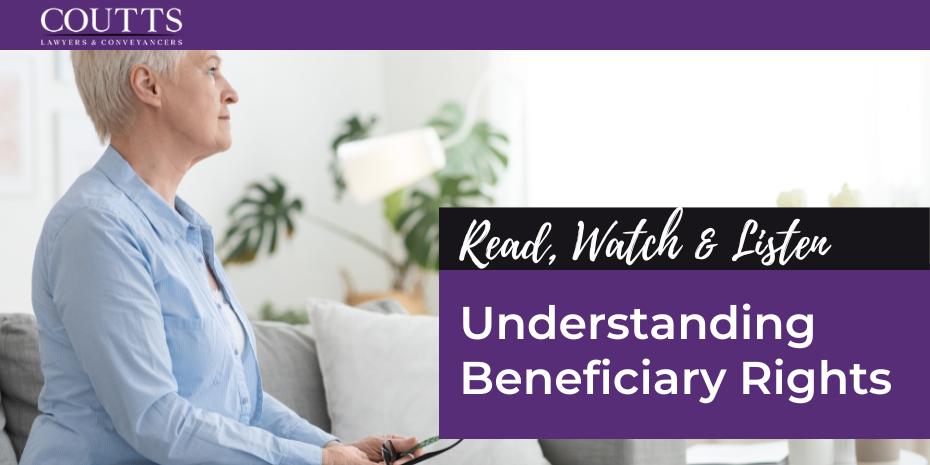A superannuation benefit may come in the form of an existing pension entitlement, an account balance or a life insurance proceed which is received by the fund. Upon the death of the member of the fund, the way in which such a benefit is payed (including tax implications) is dependent on which the benefit is paid to.
Superannuation death benefit payment:
A dependant is any person to whom a superannuation death benefit may be paid to by a superannuation fund trustee. According to the Superannuation Industry (Supervision) Act, a dependant may be either:
- A legal or de facto heterosexual spouse; or
- A SIS dependant. That is, a child of any age or someone who is financially dependent upon the member.
Also, according to the Income Tax Assessment Act, a dependant may be:
- A legal or de facto heterosexual current or former spouse; or
- A tax payer dependant. That is, a child under 18 years or someone who is financially dependent on the taxpayer
Upon the death of a member, the superannuation fund trustee will exercise his options in accordance to the superannuation fund trust deed and pay the superannuation benefits either by lump sum to:
- SIS dependants – in effect, sidestep the member’s estate and therefore being unaffected by the member’s will; or
- To the trustees of the member’s estate – here, in the case that there is a valid will belonging to the member, the trustee of the member’s estate is to distribute the benefits according to the will (this may include transferring such benefits to a superannuation benefit trust).
Or paid by pension payment to SIS dependants who:
- Are also tax payer dependants – here they may be paid by pension or by lump sum. A pension to a tax payer dependent child must, in any event, be commuted to a lump sum once they attain the age of 25 years; or
- Are not tax payer dependants (for example, a child who is over 18 years is not tax dependant) or to the trustees of the member’s estate by lump sum.
Or whatever else is determined by the superannuation fund trust deed. As can be seen, only if and when your superannuation benefits are paid to the trustees of your estate, will your will be relevant in the distribution of such benefits.
Tax Implications
- Where superannuation benefits are paid on the death of a member, as outlined above, there will inevitably be tax implications. These are as follows:
- Where a lump sum is paid to a tax payer dependant, it will not be taxed;
- Where a lump sum is paid to a tax payer non-dependant, the non-taxable components (such as, non-concessional contributions) will not be taxed, however, taxable components (such as concessional contributions or the funds earnings) will be taxed at 16.5%;
- Where a lump sum is paid to the trustee of the member’s estate and distributed to relevant recipients, it will be taxed as if the payment had been received by the recipient directly from the trustees of the superannuation fund (see the above two points);
- Where there are pension payments made to a tax payer dependant where either the deceased member or tax payer dependant is aged over 60 years, they will not be taxed;
- Where there are pension payments made to a tax payer dependant where both the deceased member and the tax payer dependant is under 60 years, the taxable component is taxed at the tax dependant’s marginal tax rate less a 15% rebate until the tax dependant attains the age of 60 years, at which time it will no longer be taxed.



